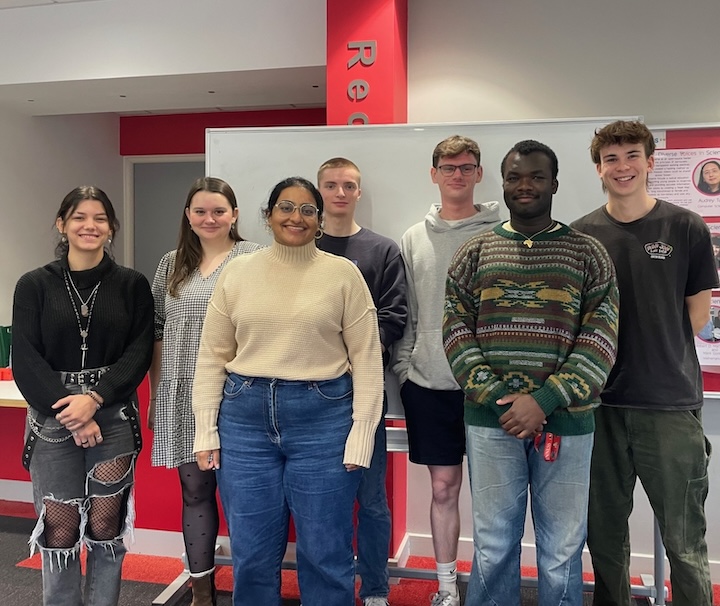Jenny Spiga is supervising Tom Kimber, Luxana Santhirakanthan, and Cameron Till, while Sarah Bugby is working with Cate Georgescu, Emily Roberts, Alex Jaffray and Barney Fry. Peter Marshall is supervising Kwaku Mintah. We are looking forward to an inspiring year of research and collaboration across a range of topics!
Medical Physics and Radiation Therapy
- Luxana Santhirakanthan – Dose enhancement in microbeam radiation therapy: Using Monte Carlo simulations, Luxana is investigating how dose enhancers interact with microbeam radiation therapy. Her project will examine the effects of concentration, beam energy, and spacing, including a comparison with experimental data collected by Jenny and her collaborators at the European Synchrotron Radiation Facility in Grenoble, France.
- Cameron Till – Mini-beam proton therapy: Cameron is researching spatially fractionated radiation therapy, comparing proton and X-ray approaches. His work will involve Monte Carlo simulations of minibeams and collimator designs to improve cancer treatment precision and overcome limitations of conventional therapies.
- Emily Roberts – Scintillating fibre optics for wearable dosimetry: Emily is characterising scintillating fibre optics as a potential technology for wearable radiation monitoring. Her project, mainly experimental, aims to create lightweight, flexible dosimeters that could transform radiation safety in clinical and industrial environments.
Reactor Physics and Energy Systems
- Tom Kimber – Micro-reactor shielding: Tom is using Monte Carlo simulations to model micro-reactor designs and assess shielding strategies that protect workers and the public. His research focuses on optimising materials and configurations to minimise radiation exposure while reducing weight and cost – critical for deployability in remote or mobile applications and supporting decarbonised energy solutions.
- Barney Fry – Burnable absorbers for reactor optimisation: Barney is investigating how burnable absorbers can be used to extend reactor lifetimes and improve efficiency. His research will contribute to safer, more sustainable reactor designs for future energy systems.
- Alex Jaffray – Space radiator design: Alex is designing a deployable space radiator that can be packaged, transported, and operated in harsh environments. His project will address challenges such as minimising complexity and mass while accounting for launch vibrations and operating environment.
Imaging and Simulation
- Cate Georgescu – DECTSim development for dual-energy CT: Cate is enhancing DECTSim, an open-source GUI-based ray-tracing simulator originally developed by Joshua Gray and Paige Cash. Her improvements will make the tool more user-friendly and powerful, enabling advanced studies in material decomposition for medical imaging.
- Kwaku Mintah – Diverging collimators for gamma imaging: Kwaku is predicting the performance of diverging collimators based on geometry and material properties with greater accuracy than current analytical models. His findings will support the design of portable gamma imaging systems for field applications.
We are incredibly proud of the ambition and creativity our students are bringing to their projects. Here’s to a year of discovery, innovation, and impact!

